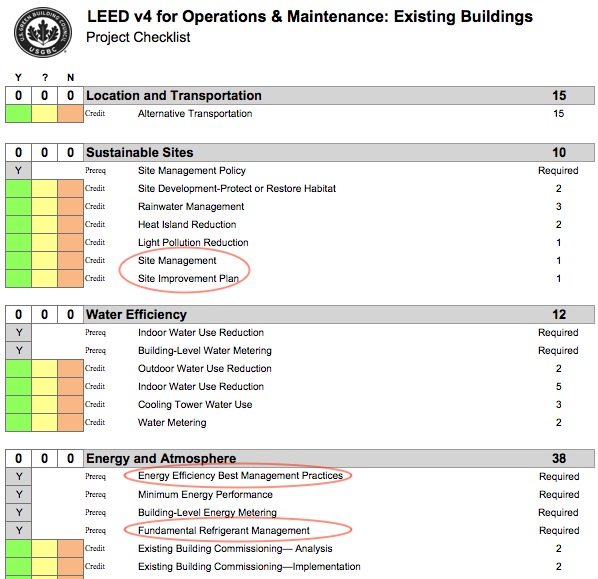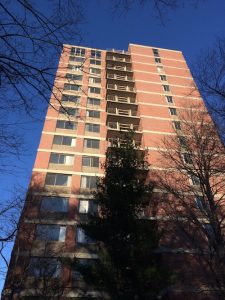by Kelsey Powers, Linnean Solutions — January 2018
Efficiency of existing buildings and facility managers
In 2010, the United States building sector generated forty-five percent of all CO2 emissions in the country, meaning nearly half of all carbon emissions came from the places we live, shop, and work in every day[1]. Much of this is due to the fact that residential and commercial buildings use seventy-five percent of all electricity produced in the U.S., for lighting, pumping, heating, and cooling. New construction projects address these concerns in a variety of ways throughout the building process, from site selection to post-occupancy energy usage tracking and long-term review processes. Existing buildings that do not undergo retrofits have an uphill battle to achieve energy-use reduction goals, with much of this responsibility assigned to facilities management (FM) teams.
The ever-expanding roles of facilities managers
The shift in approach toward building energy-use reductions has led to an expansion of FM teams’ traditional roles. The role and responsibilities of a facilities manager varies greatly by organization, with a primary goal of maintaining buildings and providing safe and healthy environments. Because common job responsibilities range from general site maintenance and repair to managing sustainability committees, often the efforts for instituting energy use reductions falls on facility managers. As the duties of FM teams have developed, the expectations and capabilities to be knowledgeable in sustainability and efficient building practices has grown as well.
FM teams and LEED Certification
A study conducted in 2010 and published by CIB (International Council for Research and Innovation in Building and Constgruction), examined the areas of “environmental performance” as they pertain to buildings that would be most efficiently managed through FM teams.[2] The United States Green Building Council’s (USGBC) Leadership in Energy and Environmental Design (LEED) v3 2009 for Existing Buildings: Operations and Maintenance (EBOM) rating system was used as a reference for the “green building indicator system”. This rating system was developed specifically for existing, operational buildings and was considered to be the most applicable to the work of FM teams. Using a system of credit categories and points, buildings are able to become LEED Certified by meeting a minimum point requirement.
The study found that FM teams had either a direct or indirect impact on 82% of the points related to building operations that led to its LEED Certification. Though this case examined only one building attempting certification via a single rating system, it demonstrates the critical role that FM teams now occupy in the reduction of CO2 emissions from our existing buildings.

Figure 1. A LEED for Operations and Maintenance 2009 checklist for a particular project in Boston, with tasks that were assigned to the facilities management staff circled in red.
LEED v4 and increased building performance
In 2013, LEED v4 EBOM brought even higher expectations for building performance and added new responsibilities for FM teams. Some of the changes in LEED v4 that affected the FM industry include the addition of new market sectors (e.g. schools, retail, data centers, and warehouse and distribution centers) as well as an increased emphasis on energy and water metering[3] (see Figure 1).

Figure 2. A college campus building that was analyzed, for the facilities department, for compliance with LEED EBOM 2009.
Now, in 2018, LEED is far from the only certification process pertinent to the facilities management industry.
The Living Building Challenge (LBC) is “a philosophy, certification, and advocacy tool for projects to move beyond merely being less bad and to become truly regenerative.[4]” The standard aims for buildings to be both net positive in their water and energy usage, as well as waste production and many other imperatives. Achieving these goals, such as net positive water use, would require FM teams to establish water collection, recycling, or on-site filtration policies and practices.
Likewise, the WELL Building Standard (WELL) was launched in 2016 with the intent to enhance the human health, well-being and comfort of building occupants. WELL does not directly address energy efficiency of buildings but focuses on air and water quality, lighting, thermal comfort, and safe cleaning practices. FM teams play a crucial role in implementing these strategies in order to achieve certification. For example, the WELL air quality credits require ongoing air quality monitoring and management for success.[5]
Growing our knowledge
Each new building certification system comes with a higher expectation of knowledge, effort and resources from FM teams to achieve specified goals. The sustainable and efficient building industry will continue to expand making it that much more important for FM teams to continue their education in these systems, what areas will likely affect their work, and what will be expected of them from building owners. Linnean Solutions recently completed a LEED EBOM renovation project with Boston College in which the facilities management team played an integral role in its success. Check it out here.
[1] http://architecture2030.org/buildings_problem_why/#lightbox[group-158]/0/
[2] Green Buildings and FM – A Case Study on How FM Influences the Environmental Performance of Office Buildings
[3] http://www.facilitiesnet.com/green/article/LEED-v4-Changes-Are-Focused-On-Performance-Facilities-Management-Green-Feature–14385
[4] LBC Standard 3.1
[5] WELL Building Standard v1